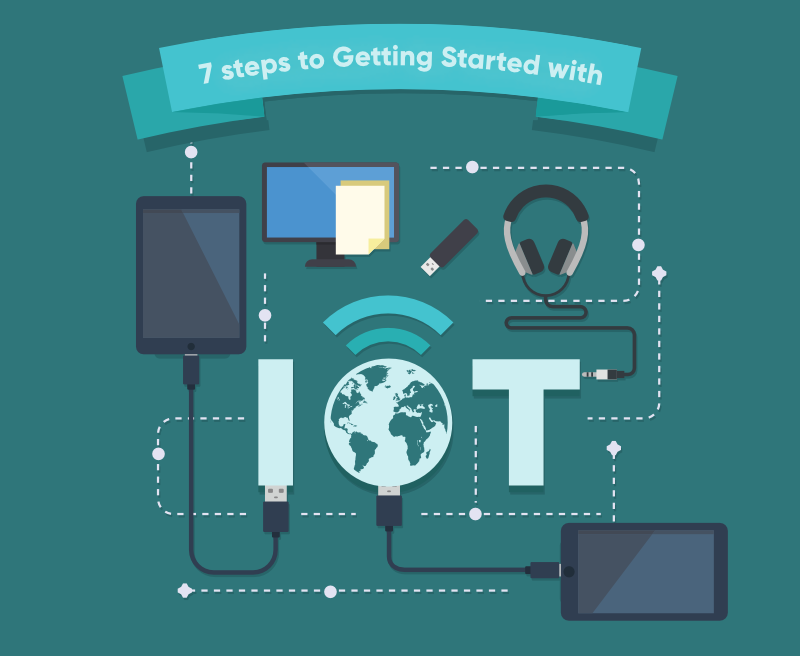7 Steps to Getting Started With IoT
Last Updated :
06 Dec, 2019
Ever been amazed by the technology that gets your coffee ready even before you wake up? Or that sets your alarm clock according to the traffic and weather conditions? Do you want to get a better look and create one of these technologies yourself? If the answer to any of the above questions was yes, then you are in the right place. Let’s dive into the world of IoT.
Internet of Things (IoT) is the networking of physical objects that contain electronics embedded within their architecture in order to communicate and sense interactions amongst each other or with respect to the external environment. In the upcoming years, IoT-based technology will offer advanced levels of services and practically change the way people lead their daily lives. Below are the 7 steps to getting started with IoT.

1. Choose your Hardware Wisely: IoT is the interconnection of devices that can sense and stimulate the physical world around you. In this age, you can have access to cheap, portable IoT development kits. There are a wide variety of IoT boards with different uses. The top IoT hardware platforms are Arduino boards, Particle.io, Raspberry Pi and Espressif. It might seem challenging to choose the right hardware, however, there are many online tutorials to help you select one. Arduino boards are the best for a beginner in IoT. Get started with the best one for you!
2. Know Your Network: The string connecting all your IoT devices is the internet. You don’t need to know the A-Z of the internet before you start. But knowing the basics and learning along the way is a must. IoT standards and protocols allow the devices and servers to talk to each other in many ways. Hence, it is important.
3. Sharpen Your Programming Languages: For any software technology, you need to learn the right languages. For IoT, JavaScript and Python are becoming popular. However, the most important language for IoT projects remains to be C. It doesn’t require much processing power and is present on almost all advanced embedded system platforms. Java, Swift, and PHP are also used for IoT projects. Also, a basic understanding of web and app development is required to create interfaces that interact with your IoT devices. Though IoT devices can have their user interfaces built-in, it’s complicated when just getting started.
4. Machine Learning and AI: IoT devices accumulate enormous amounts of data through sensors and actuators. Once your device gathers data, it needs someone to make sense of that data. Here, Machine Learning and AI come to the rescue. Tesla self-driving car is one such example where IoT and AI come together to save the world. It will soon become rare to find an IoT project that doesn’t use AI. This makes learning Machine Learning and AI in the initial stages a big advantage.
5. Keep Calm and Stay Secure: IoT connects you to a lot of devices. It also exchanges information from your smartphone to IoT enabled devices. Even though IoT makes your life easier, it also creates loopholes to access that information. Hence learning about securing your devices from such attacks is essential. An IoT hack is a much bigger problem than a computer hack. Since IoT is related to devices, a hacker can disable the brakes of a self-driving car, disable smart locks of apartments or attack critical infrastructure like water supplies. Security should be considered in each phase of the project.
6. Start Small: Don’t start trying to build a self-driving car. This is quite ambitious, but it will stress you out. As “Hello world” is to programming, “Hello blinky” is to IoT. It is a simple project to make an LED blinking app and connect it to your IoT device. When you can make such small projects you can go bigger and better.
7. Keep Yourself Updated: IoT is changing every day with lightning speed. From one language to another, from one security measure to another, it’s vital to be updated about all current trends. Following instructors and innovators on social media and getting to know about projects is a great way to stay updated.
Like Article
Suggest improvement
Share your thoughts in the comments
Please Login to comment...